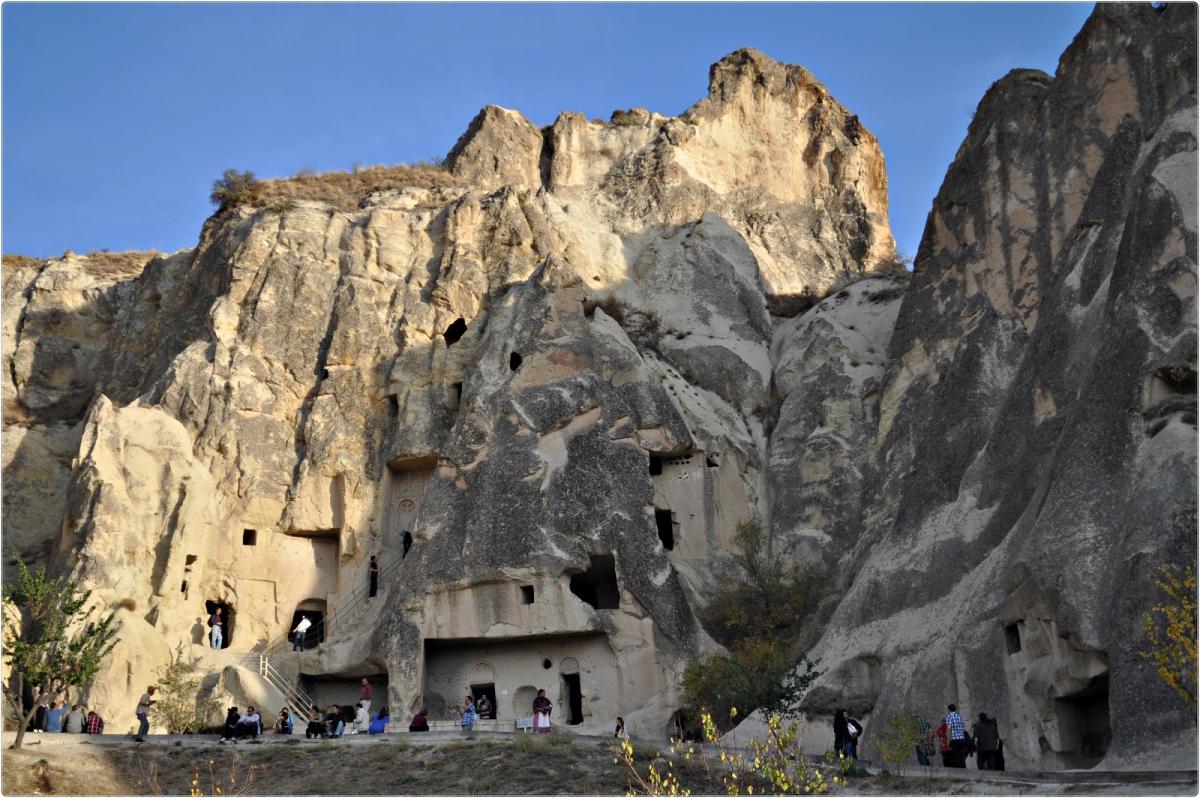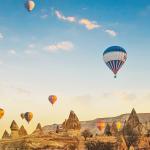Goreme National Park and Cave Churches in Cappadocia,
Monastery Of The Nuns
A visit to the museum begins with the monastery. It is at the left side of the entrance with six floors. The first two floors were used as a kitchen, cellar, and living rooms. On the third floor, there is an 11th-century church with an undestroyed iconostasis. The walls are painted with red lines. Fourth and fifth floors are connected with chimneys and were used as a refuge. Large stones were used instead of doors. The Monastery of the Monks is on the opposite side of the Monastery of the Nuns, built on the same plan and for the same purpose.
Winery
The history of winegrowing in Cappadocia dates back to the very early ages. A good evidence is a recently discovered winery inside the Museum, dating one or two centuries B.C. The containers are hollowed out of the rock and the distilling places in front of the wine-press are rather interesting. Take a look at our Cappadocia day tours.
The Cellar, Kitchen, And Refectory
These are three rooms side by side, connected with an inside passage. The first room was used as a cellar. The places to store the food are still present. The second room served as a kitchen. The pit at the center of the room is called “Tandir” a special type of fireplace that is still popular in the villages. The third room is the refectory. At the left side of the entrance, a large table and sitting places are hollowed out of the rock. There is enough place for 40-50 people. At the head of the table, there is a private place for some important person to sit. Opposite the entrance is a pit for pressing the grapes. The alcoves on the walls are for storing the food.
Carikli Church (Sandalli)
After the dark church, it is easily recognized with its iron stairs. Although being a two columned church it is on a cross plan. The themes of the frescoes are nearly the same as in the Elmali and Karanlik churches. In the central apse, Christ is enthroned with St. John the Baptist at his right and Mary at the left. Just above the left apse, a fresco about the hospitality of Prophet Abraham is painted. Above the entrance, there is a painting of the Crucifixion and to the left a destroyed fresco of the Baptism. Other frescoes are the Transfiguration, Nativity, the Three Kings, Resurrection of Lazarus, Christ taken to crucifixion with a rope tied round his neck, and Angels at the Tomb. The church takes its name from the two footprints on the floor, just below the Ascension. The entrance if the church with sandals.
Sakli Church (St. John)
It is on a hill on the road to Avcilar. The paintings are of the 11th century and they are painted directly on the rock. This is the most outstanding church in Goreme. The style and the colors are of high quality and bright. It was discovered in 1957. Thus, unlike other churches, the frescoes could remain intact. Especially the angel decorations are very beautiful. The church is located in a place where the region is best seen.




































































































































